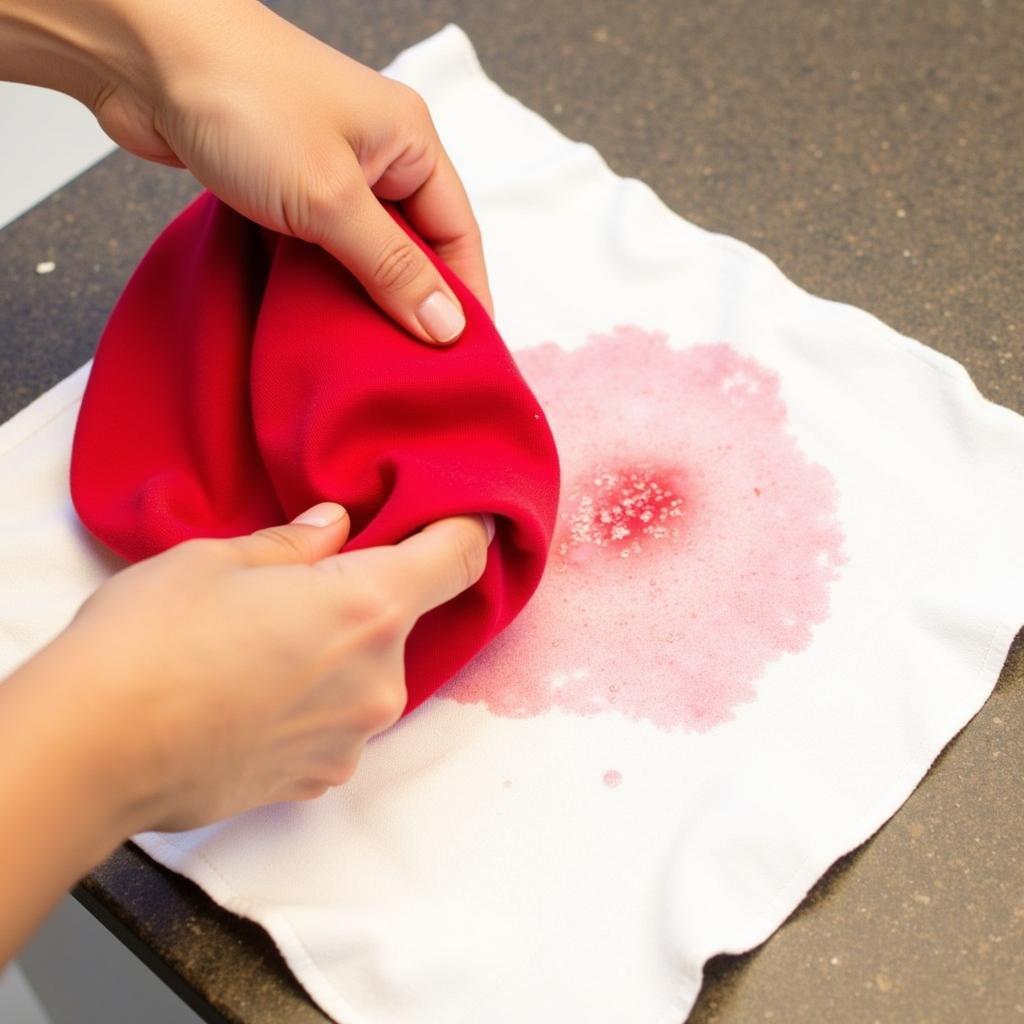Laundry day doesn’t have to be a game of color roulette! Understanding which colors can safely share a wash cycle can save you from potential dye-transfer disasters. Let’s demystify the world of color compatibility and turn you into a laundry master.
Decoding the Color Wheel: Why Some Colors Bleed
Before diving into specifics, let’s brush up on some color theory. When we talk about colors “bleeding,” we’re referring to excess dye molecules transferring from one fabric to another during washing. New garments, especially brightly colored ones, tend to have a higher concentration of these loose dye molecules.
The Golden Rule: Sorting is Key
The cardinal rule of laundry: always sort your clothes. But how? While intricate sorting methods exist, a simplified approach focusing on color intensity and fabric type is often sufficient.
- Whites: Always wash white items separately. White fabrics easily absorb stray dyes, leading to unwanted discoloration.
- Lights: Pastels, light grays, and whites with delicate patterns can usually be washed together.
- Darks: Black, navy, browns, and deep jewel tones belong in the “darks” pile.
- Brights: Vivid colors like reds, oranges, and yellows, especially newer items, benefit from a separate wash. These colors have a higher tendency to bleed.
Can You Wash All Colors Together?
The short answer? Not really. While some color combinations are generally safe, washing all your colors together is risky. The potential for color bleeding is amplified when you mix items with varying dye types and fabric compositions.
What Colors Can I Wash Together? A Practical Guide
Let’s break down safe color combinations for stress-free laundry days:
- Black and White: Contrary to popular belief, washing black and white items together can be done – with caution. Opt for cold water and a gentle detergent formulated for dark colors to minimize the risk of dye transfer.
- Cool Colors: Blues, greens, and purples generally play well together. You can often combine these shades, particularly if they’re similar in intensity.
- Warm Colors: Reds, oranges, and yellows can often share a wash, but be mindful of new, bright items, as they might bleed.
- Light Neutrals: Light grays, tans, and beige items are generally safe to wash together.
Pro Tip: When in doubt, perform a quick bleed test. Wet a small, inconspicuous area of the garment and blot it with a white cloth. If the color transfers, wash the item separately.
 Fabric Dye Bleeding Test
Fabric Dye Bleeding Test
Beyond Color: Fabric and Care Instructions Matter
While color is crucial, consider fabric type and care labels too.
- Delicates: Lace, silk, and items with embellishments require gentle handling. Wash them separately or use a mesh laundry bag for added protection.
- Heavy Fabrics: Jeans, towels, and sweatshirts can be harsher on delicate items. Wash them separately or with similar weight fabrics.
- Care Labels: Always check the care label! It provides valuable information about washing temperatures, drying instructions, and more.
Mastering Laundry: Tips for Preventing Color Bleeding
- Cold Water Wash: Cold water minimizes dye release, reducing the risk of color transfer.
- Color-Catcher Sheets: These magical sheets trap loose dyes in the wash, preventing them from settling onto other garments.
- Short Wash Cycles: Reduce the time clothes spend submerged in water to minimize bleeding.
- Don’t Overload the Machine: Overloading restricts water circulation and increases friction, potentially leading to color transfer.
- New Clothes, Separate Wash: Wash brand new, brightly colored items separately for the first few washes to prevent dye transfer.
Conclusion: Laundry Harmony Achieved
Washing clothes doesn’t have to be a gamble. By understanding which colors can and cannot be washed together, and by following our expert tips, you can confidently conquer laundry day and keep your clothes looking their best. Remember, when in doubt, err on the side of caution – your wardrobe will thank you.
FAQs:
Can I wash a red shirt with black pants?
While it’s generally safe to wash black with other dark colors, washing a new, bright red shirt with black pants can be risky. The red dye might bleed onto the black fabric. For the first few washes, it’s best to wash the red shirt separately.
What happens if I wash white clothes with colored clothes?
Washing white clothes with colored clothes, especially new or bright ones, can lead to dye transfer. The white fabric can absorb the loose dyes from the colored clothes, resulting in discoloration.
How can I brighten dull whites?
Over time, white clothes can become dingy or yellowed. Consider using a laundry booster or whitener specifically designed for white fabrics. Additionally, drying white clothes in the sun can naturally brighten them.
Can I wash darks and colors together?
It’s generally not recommended to wash darks and colors together, especially if the “colors” include bright or new items. Darks have a tendency to bleed, potentially staining lighter-colored garments.
What is the best way to wash delicate items?
Delicate items like lace, silk, and garments with embellishments require special care. It’s best to wash them by hand or on a gentle cycle in the washing machine using a mesh laundry bag. Always check the care label for specific instructions.
Need more laundry guidance? Contact us!
Our team at Color Box Hanoi is here to assist you with all your color and laundry-related queries. Reach out to us at 0373298888, email us at [email protected], or visit us at 86 Cầu Giấy, Hà Nội. We offer 24/7 customer support.
